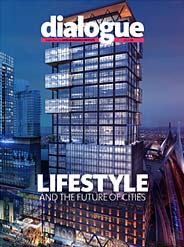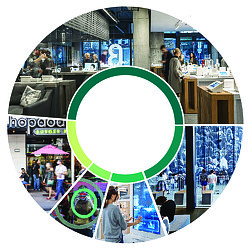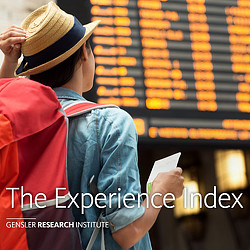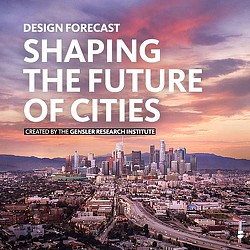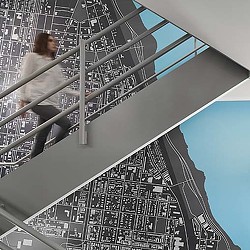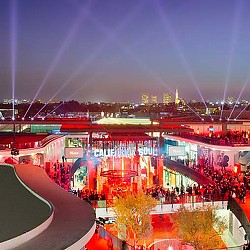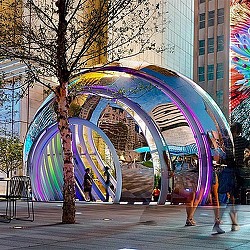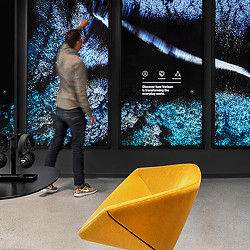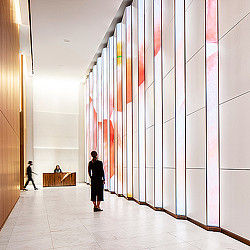Most people understand how digital technology and the Internet have transformed human life over the past 10 years, but few are aware of how significantly both are affecting the physical spaces in which we work and live. That’s about to change. We’re in the midst of a convergence of computing power into the built environment, and it’s being defined by a blend of intelligent sensing, data collecting, wearables, voice computing, and automation.
OUR DIGITAL BEHAVIORS HAVE CHANGED OUR EXPECTATIONS OF PHYSICAL SPACES
At Gensler, our Digital Experience Design (DXD) practice has been shaping this new reality over the past few years. Our clients come to us because they’re interested in keeping up with the latest developments in technology, but the focus is always on designing better experiences. In the near future, how we shop, travel, work, and live will be much different. Our digital behaviors have changed our expectations of the brands we interact with and the physical spaces they occupy.
SPACES NOW HAVE TO BE MULTIPURPOSE, FLEXIBLE, AND ADAPTIVE — JUST LIKE TECHNOLOGY
Today, spaces need to be multipurpose and flexible to be adaptive to rapidly changing technologies. People who have grown up with social media expect their lives to be rich and dynamic, and they want physical spaces to reflect that. In the workplace, they want a space that helps them feel connected to their coworkers. In a retail environment, they expect the same dynamism they experience online with recommended and consistently updated products. But technology alone isn’t enough to provide a dynamic experience. To be effective, digital technology must be used in service to the user — whether they’re a worker, shopper, traveler, or sports fan.
We’ve already helped some of our clients break new ground. Retail-as-a-service outfit b8ta (pronounced “beta”) uses sensors embedded in the ceilings and floors next to each product to collect shopping data and customer feedback, allowing product brands to track engagement. For its first offline experience, Taobao Choice Store in Hangzhou, China, uses facial recognition to detect return shoppers and to push relevant content or past purchases to nearby screens. Both the b8ta and Taobao Choice stores are cashless, creating a frictionless checkout experience.
This is just a glimpse of what’s possible when we think about how technology can enhance human experience. Digital technology and design is part of the new language for designers to provide a greater range of experiences in our built environment.
DXD INCREASES BUSINESS VALUE WITH AN INTIMATE UNDERSTANDING OF THE CUSTOMER
DXD began nearly five years ago with a focus on designing immersive spaces for workplace lobbies, retail stores, and exhibits. Our early work with Harman and Cadillac House in New York remains relevant. In those projects, we helped both brands emphasize experiences over the products while integrating screens, touch computers, and digital programming.
Today, our starting point is not about figuring technology into architecture. We are basing design on an insightful understanding of the client or consumer, regardless of the type of building, interior, or environment we’re addressing. What experiences are users actually looking for? Where does that experience break down? How can we design to solve that breakdown for them? In solving these questions, we get closer to reaching our goal: a seamless experience, with connectivity that is ultimately as frictionless as possible. For our clients, these investments translate to higher brand affinity, more personalized customer engagement, and increased business value.
WE TRANSLATE OUR INSIGHTS AND DATA TO YIELD SMARTER, MORE ENGAGING SPACES
Time and convenience are a customer’s most valuable currency. With DXD, we are not only designing for time and experience, but also creating adaptability so buildings can change as fast as technology and the expectations that come with it. Our future spaces will be convenient, personal, and connected.
Hans Neubert is a Digital Experience Design Leader based in Gensler’s New York office.
